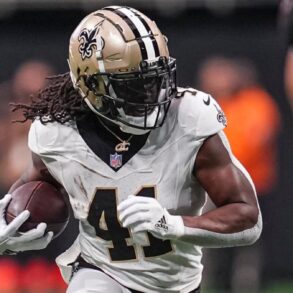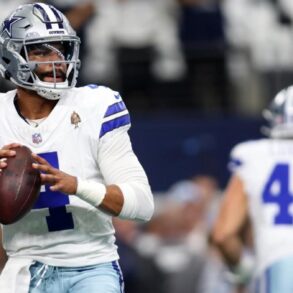Pete Carroll has been a prevalent name in the Kiffin household since Lane Kiffin was 5 years old.
After playing two seasons at safety for the now defunct Pacific Tigers football team, Carroll became a graduate assistant at his alma mater in 1973. He received his first real shot at coaching at the University of Arkansas in 1977 under legendary coach Lou Holtz. He received a glowing recommendation from former Pacific defensive coordinator Bob Cope, who had just joined their staff.
The newest Razorbacks graduate assistant would cross paths with Monte Kiffin, the team’s defensive coordinator who ultimately popularized the “Tampa 2” defense which led the Buccaneers to their first Super Bowl title in 2002.
Carroll and Kiffin were almost immediately drawn to each other, with the young assistant’s unique nature making an impression on Kiffin.
“There’s nobody that taught me more about coaching football than Monte Kiffin,” Carroll said. “He took me under his wing way back in Arkansas and from that point forward, he gave me approach, defensive philosophy, mentality, expectations, standards. He gave me so much and I owe so much to him.”
Three years later, Monte was named the head coach of the NC State Wolfpack and hired a 28-year-old Carroll to be his defensive coordinator after spending a season coaching the Ohio State Buckeyes secondary.
“He would always tell me that he had this young assistant he just thought was brilliant,” said Lane Kiffin, reflecting on the words of his late father. “[After] the interview process at Ohio State, he made [Pete] a coordinator so young and decided he had found this brilliant guy that was well beyond his years.”
Shy of two decades after his last season under Monte in 1982, Carroll was named the head coach of the USC Trojans. This was an unexpected turn back to college for Carroll, who had spent the last 17 years coaching in the NFL with stints as the head coach of the New York Jets and the New England Patriots.
Not to mention USC’s glory days had been long gone when Carroll took the job. He was entering into a full rebuild for the team that hadn’t won a bowl game in five years.
Carroll didn’t forget where he started, though, and returned the favor from the father to son by hiring Lane as USC’s tight ends coach . Monte would frequently make trips to Los Angeles to visit his mentee’s office and spend hours talking football.
“When Lane came around, I told Kiff, ‘I’m going to give him everything I got. Just like you did me, I’m going to take care of him, do everything I can to give him the best chance possible to be all that he could possibly be,'” Carroll said.
In the process, Lane was provided with the first-hand experience of seeing Carroll turn the program around – and in utter dominating fashion.
In Lane’s five seasons under Pete with the Trojans, they went 65-12 with four bowl game victories and two national championships. Their two BCS bowl game wins came with a combined 50-point margin of victory against Michigan and Oklahoma.
Yet ironically, the biggest lesson Lane learned came from losing. A pretty devasting loss actually. A loss that ended a 34-game win streak in the 2006 Rose Bowl.
As the Trojans were going for their third consecutive national championship, they were upset by Vince Young and the Texas Longhorns, 41-38. The contest still holds up as one of the greatest college football games. It drew an estimated 35.6 million viewers which stands as the most-watched college football game in history.
But as the adage goes: You can’t win them all.
“He didn’t seem as down as I would’ve thought,” Lane said. “The team we played against had the game of their lifetime and he told me, ‘I wanted to build this program so good that the only way we would lose is when a team just played lights out. And that’s going to happen in this sport sometimes.’
“I thought that was such a unique way of looking at it, like you better play the game of your [life] in order to beat us. That’s just how competitive and how high-level he wanted to build it. … He just wasn’t going to let the building be down, it was amazing.”
Kiffin was promoted up to offensive coordinator by the end of his tenure – parlaying his time under Carroll into being named the youngest head coach in Raiders history at 31 years old. He’s now entering his sixth season as the Ole Miss Rebels head coach, with three bowl game victories and not a single losing season in his current tenure.
“His eval on players, he’s always finding positives,” Lane said of Carroll. “He was always like, ‘You don’t need to point out the things they can’t do. What can they do and how can we make them do the other things better.’
“He was always going to bring everybody up to the top and he’s carried that over into the NFL which doesn’t happen a lot.”
The Seattle Seahawks believed history would repeat itself for Carroll, and they were ultimately right.
In 2010, he left one rebuild at USC for another in the NFC West. The Seahawks had endured two consecutive losing seasons for the first time since 1993, going 9-23 in the two seasons prior to hiring Pete.
One of the first people he added to his staff was Dave Canales, his assistant strength training coach at USC. He barely had any coaching experience before receiving this life altering opportunity.
This post was originally published on this site be sure to check out more of their content.








